Angkor and Cambodia in the Sixteenth Century
by Bernard Philippe Groslier & Charles Ralph Boxer & Michael Smithies
The first and only collection of Spanish and Portuguese written sources on Angkor, predating the Angkorian "rediscovery" by more than 300 years.

Type: hardback
Publisher: Orchid Press
Edition: #60 at Angkor Database Library.
Published: 2010
Authors: Bernard Philippe Groslier, Charles Ralph Boxer & Michael Smithies
Pages: 186
ISBN: 9745240532
Languages : English, Portuguese, Spanish
Seminal compendium of major Spanish and Portuguese sources on Angkor, B.P. Groslier's work (initially published in French in 1958) is also an important contribution on the "decline and fall" of the Angkorian Empire.
All the quoted explorers, missionaries or adventurers, concur to state that Angkor was rediscovered "by chance", during a hunting party led by Khmer King Ang Chan in the mid 1500s. Showing the extent of plagiarism in all these testimonies, Groslier attempts a much more nuanced approach by studying the multiple factors that led to the abandonment of the Angkorian metropolis, including the military and cultural pressure by Siamese forces, the decay of the irrigation system, and the infightings between Jayavarman VII's (legitimate or self-proclaimed) heirs.
Note: we have added C.R. Boxer as an author, which was B.P. Groslier's wish but did not happen because of "Boxer's modesty", according to Groslier himself in his foreword.
AngkorDatabase input:
- Here is the integral text of Diogo do Couto's Chapter 6 of Duedecima Decada da Asia, "Of the Great and Marvellous City Discovered in the Forests of the Kingdom of Camboja, its construction and its location". This text is the recollection of the Franciscan friar António da Madalena's visit to Cambodia in 1551 or 1552.
- Antoine Cabaton has given his own chronology of the Portuguese Dominican Mission in Cambodia: 'C'est vers 1553 que le premier Missionnaire Dominicain dont le nom soit connu, le portugais Gaspar DA CRUZ, arriva au Cambodge de Malaca [Francis Garnier prétend pour sa part qu'en 1553 les Missionnaires portugais Luis CARDOSO et Juan MADEIRA furent les premiers Européens qui pénétrèrent au Cambodge].
Vinrent après lui frey LOPO CARDOSO et JOAO MADEIRA ; quelques mois plus tard frey SILVESTRO D'AZEVEDO qui, à la suite de la prise par les Chinois d'une cargaison envoyée de Malaca au roi du Cambodge PRAHUNCAR LANGARA( PONHATAN), sous la conduite du P. MADEIRA, fut réduit en esclavage, ainsi que les deux pères REYNALDO DE SANTA MARIA et GASPAR DO SALVADOR, qui arrivèrent peu après avec une nouvelle cargaison, que le roi s'appropria. Mais, pris de crainte, redoutant une vengeance des moines portugais, il se tourna vers le père SILVESTRO qui, très adroit, arrangea les choses à la grande satisfaction de PRAHUNCAR qui put jouir en paix de son butin. Le P. SILVESTRO passa au rang de Conseiller intime et mis au-dessus des grands mandarins. Il mourut au Cambodge vers 1585.
Vers 1570, arrivent ANTONIO DE DORTA, LUIS de FONSECA et JORGE DA MOTA. Le premier, qui devint vicaire général de l'Inde à Malaca, y fut chargé de la direction du Couvent de Saint-Dominique, à la fin du XVIe siècle. JORGE DA MOTA et Luis DE FONSECA, faits prisonnierspar les Siamois en 1594, sont emmenés au Siam. Le premier, blessé, meurt se rendant à Malaca ; le second est massacré alors qu'il disait sa messe.
En 1596 arrivent : le père provincial de l'Ordre de Saint-Dominique à Manille : Fray ALONSO JIMENES, le P. fray DIEGO ADUARTE avec le frère lai JUAN DEÇA, chirurgien, accompagnant la première expédition espagnole au Cambodge sous les ordres du général GALLINATO. En le courant de 1598, trois pères Dominicains dont le nom n'est point cité, quittent Manille avec l'expédition de secours commandée par Luis ORTIZ DEL CASTILLO, laquelle, du fait des imprudences et de l'arrogance des Espagnols, de leurs déprédations, fut massacrée par le chef de la Marine et ses Malais.
Fin 1598, partent de Manille, sur la frégate commandée par JUAN DE MENDOZA GAMBOA, les PP. fray JUAN MALDONADO, PEDRO LABASTIDAet JUAN DE SAN PEDRO MARTIR. Les deux derniers succombèrent dans le massacre que fit l'Okna LAKSAMANA (chef de la Marine) des Espagnols à Chordemuco (Phnom-Penh). Le père MALDONADO parvint avec peine à s'enfuir avec JUAN DE MENDOZA et quelques rares survivants, au Siam ; à Odia (Ayuddhia) où ils sont internés avec défense d'en partir. Craignant pour leur vie, ils prennent la fuite et sont poursuivis plusieurs jours par les Siamois, qui harcelaient ou blessaient la petite troupe. MALDONADO parvint à gagner la Cochinchine où il mourut des blessures reçues dans sa fuite. Avant d'expirer, il écrivit encore à son supérieur à Manille pour lui déconseiller toute nouvelle tentative sur le Cambodge. Ainsi finit le rôle des Dominicains au Cambodge, bien que, en 1628 et en 1629, le P. Fr. JUAN BAUTISTA DE MORALES, né à Ecija, essaya d'y fonder une église. N'y pouvant parvenir, il retourna à Manille et mourut à Foning-cheu (Fokien), le 17 septembre 1664.' (in Dictionnaire de bio-bibliographie générale, ancienne et moderne de l'Indochine française / A. Brebion (publié après la mort de l'auteur par A. Cabaton, Paris, SEGMC, 1935, pp. 129-130)
Tags: decline and fall, Siam, King Satha, Diogo do Couto, early explorers, 16th century
About the Authors
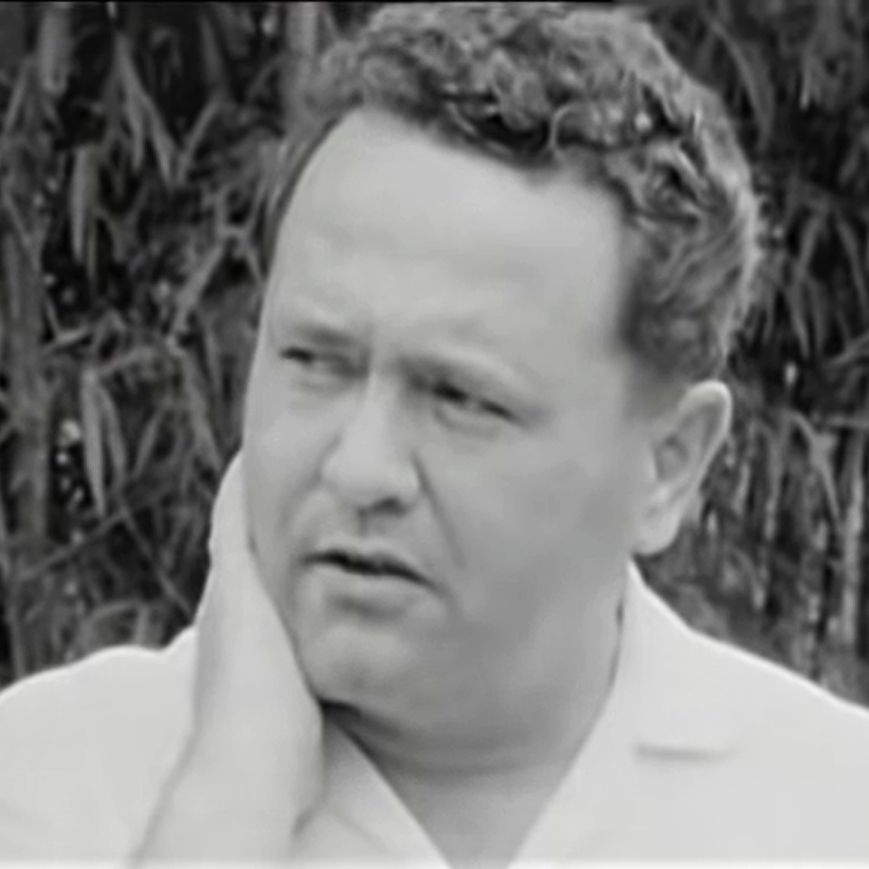
Bernard Philippe Groslier
Son of Cambodia National Museum's founder George Groslier, Bernard Philippe Groslier (10 May 1926, Phnom Penh - 29 May 1986, Paris) was the last French Curator of Angkor Monuments from 1960 until 1975. Archeologist and explorer, he has led the excavations and mapping process at Angkor Thom.
His book Angkor, Hommes et Pierres (Paris, 1968) remains a major reference for Angkor researchers. He also contributed several monographies on Khmer inscriptions, sculptures and architectural vestiges. Bernard Philippe Groslier was also a pioneer in developing the approach of Angkor as "hydraulic city", studying the irrigation and water management.
A childhood friend of H.M. King Norodom Sihanouk, Groslier developed the archaelogical work in the temples surrounding Angkor, obtaining funds from General de Gaulle, whom he guided through the Angkorean ruins during the French leader's historic visit to Cambodia in 1967. He protected as much as possible the archaelogical sites, and the families of Cambodian workers at Angkor, during the 1970-1974 civil war. At that time, some 3,000 refugees lived in Angkor and other temples, while 200 took refuge at the Conservation d'Angkor. Groslier himself suffered a severe knife wound.
He strongly believed that the future of Angkor preservation and research was to become a mission of the Cambodian people. In a lecture given at Sorbonne University in 1984, he expressed what he had thought for a long time: "Il est clair que nous avons d'une certaine manière, non pas délibérement mais concrètement, dépouillé les Khmers de leur passé. Ils n'en étaient plus les maitres (...) J´ai quand même passé vingt ans de ma vie à Angkor et (...) mes sentiments ont toujours été très ambigus (...) Il est clair que pendant 75 ans un pouvoir étranger, un pouvoir intellectuel étranger, des étrangers, ont trôné à Angkor, moi ayant été le dernier. Il est évident que cela a provoqué une sorte de dichotomie dans la pensée des Khmers vis-à-vis de leur passé." [It is obvious that we have somehow -- not deliberately but factually -- stripped the Khmer people of their past. They were not the masters of this past anymore...After all, I spent 20 years of my life in Angkor and...my feelings have always been quite ambiguous...Clearly, for some 75 years, a foreign power, a foreign intellectual power, some foreigners, reigned at Angkor, and I was the last one of them. Obviously, this has triggered some sort of chiasm in the way Khmer people consider their past.]
See Bernard Philippe Groslier's obituary in The Washington Post here.

B.P. Groslier as a young Cupid photographed in Phnom Penh (EFE0)
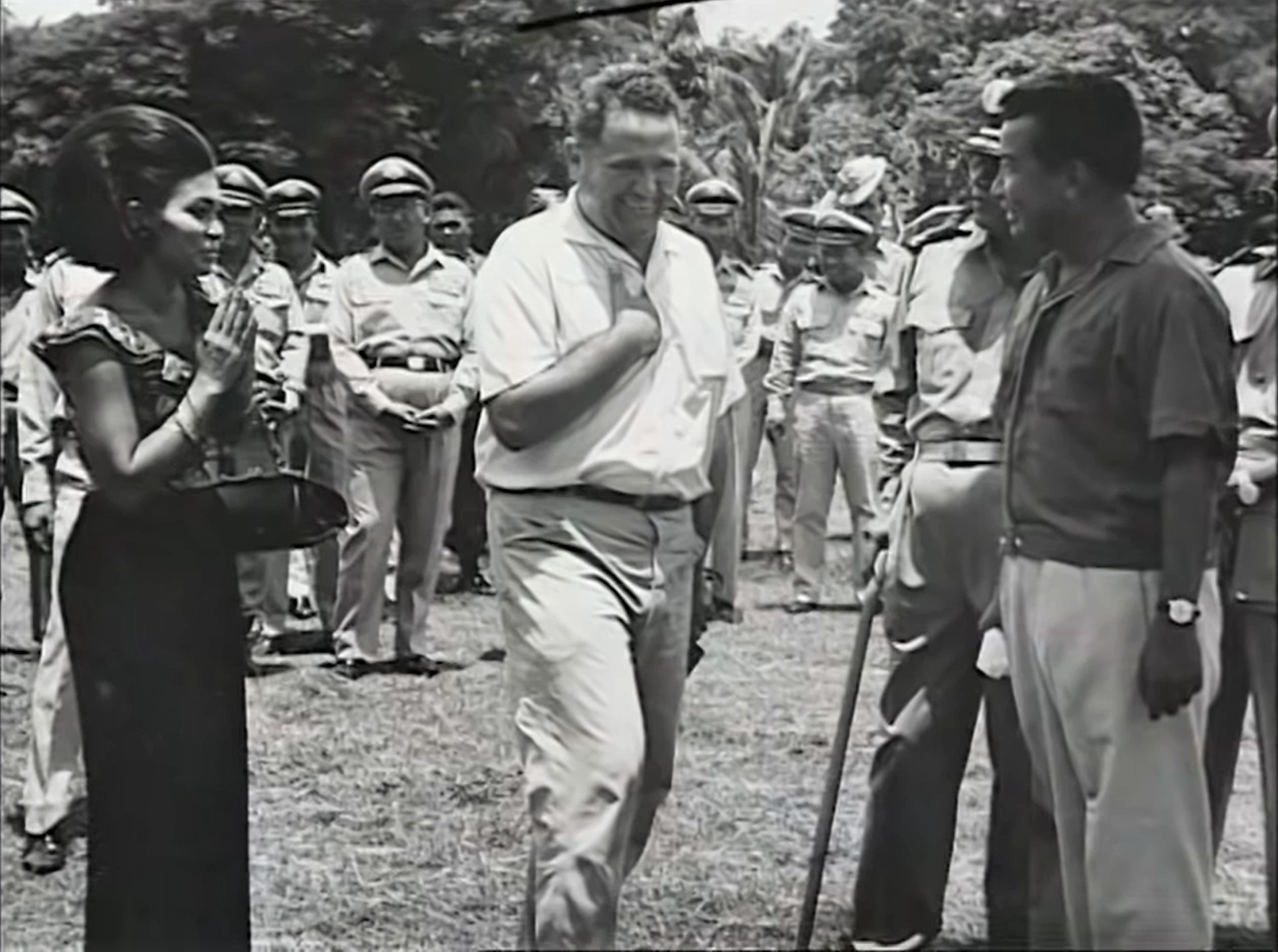
With H.M. King Norodom Sihanouk (and H.R.H. Sisowath Pongsanmony?) at Angkor in 1967 (EFEO)
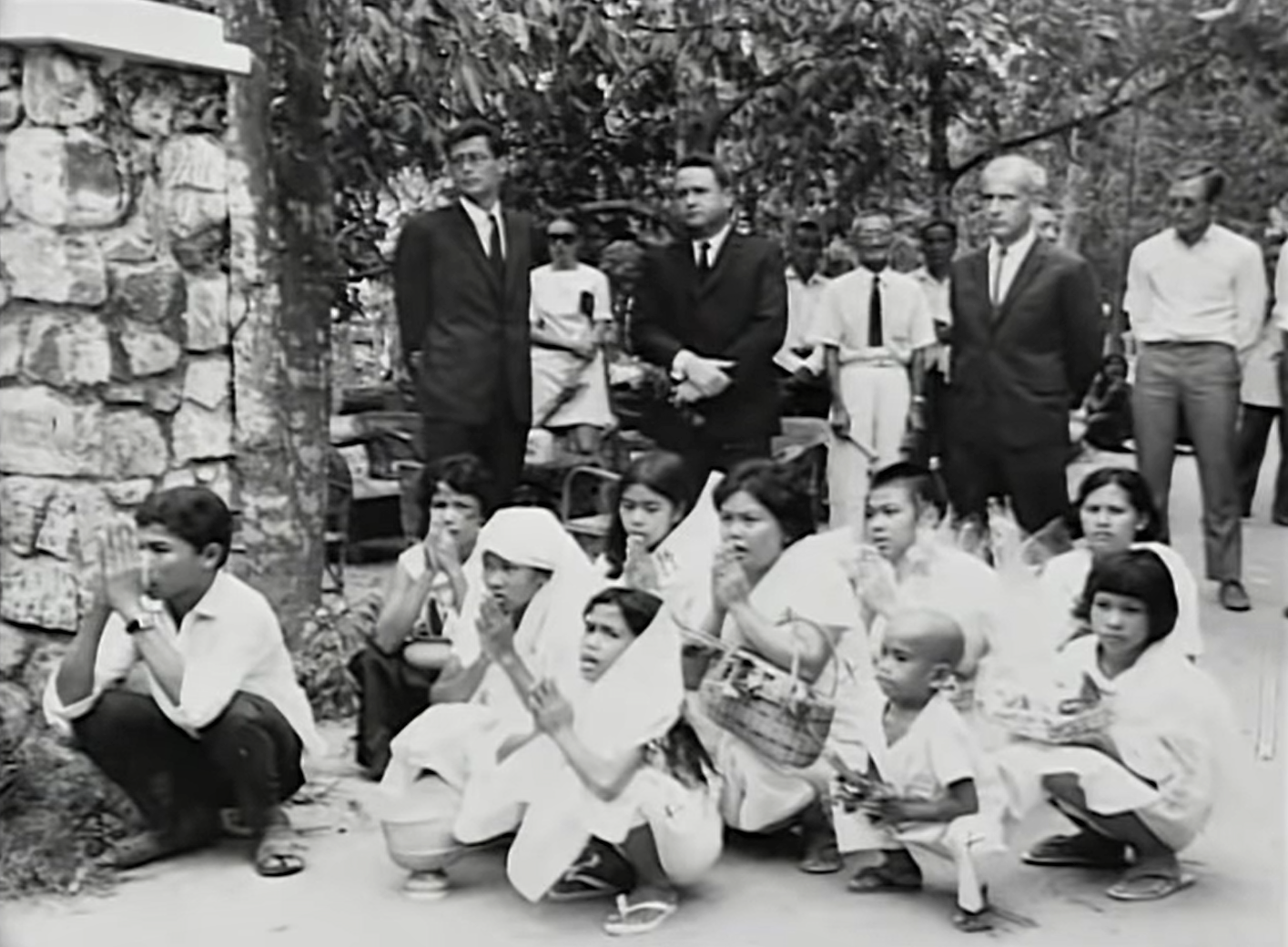
At Henri Marchal's funerals in Siem Reap, 1974 (EFEO)
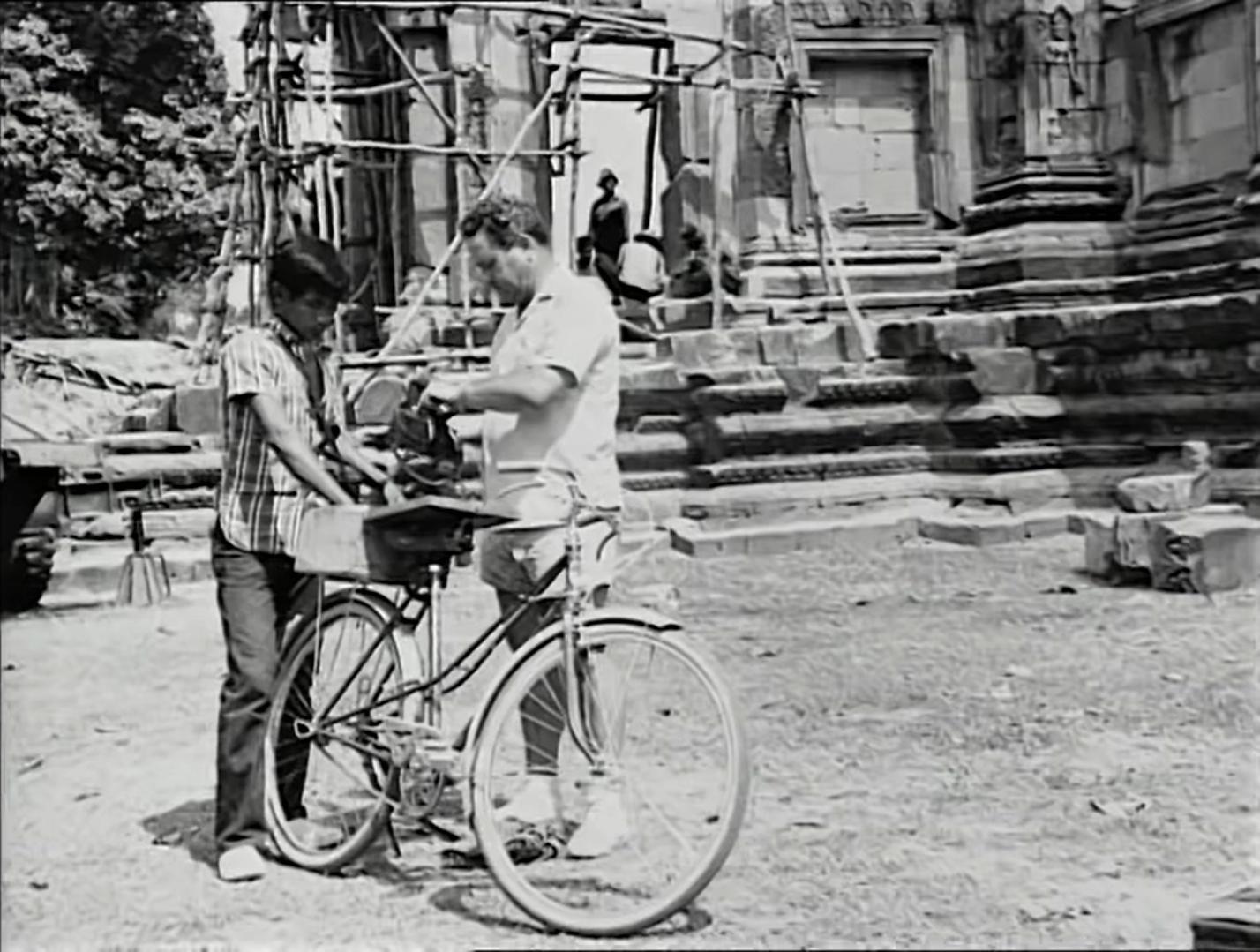
At Angkor during the civil war, when he was allowed to go around the site only by bicycle (EFEO)

Charles Ralph Boxer
C.R. Boxer (8 March 1904, Isle of Wight-27 Apr. 2000, St. Albans, GB), legendary Far East researcher and scholar, was the chief of British Military Intelligence services in Hong Kong during WWII.
His interest in Dutch and Portuguese maritime expeditions during the XV and XVI centuries led him to the discovery of an unpublished chapter in the monumental chronicle "Decada da Asia", from Portuguese author Diogo do Couto: the description of Angkor Wat by a Franciscan priest in 1551, one of the oldest and most developed Western documents related to Angkor.
Professor at King's College, London, granted honorary doctorates in Lisbon, Utrecht and Taiwan, C.R. Boxer was banned from entering Portugal by dictator Salazar after publishing his Race Relations in Portuguese Colonial Empire 1415-1825 in 1963. Later on, however, he was granted the highest Portuguese distinction, the Grand Cross of the Order of Infante Dom Henrique.
Boxer has compiled the famous "Boxer Codex", one of the richest collections of written sources on the Ancient Far East. He is also known for his affair with American journalist Hillary Hahn (1905-1997), whom he married in 1945. A prolific contributor to The New Yorker, Hillary Hahn published some 50 travel and history books, including Raffles of Singapore.
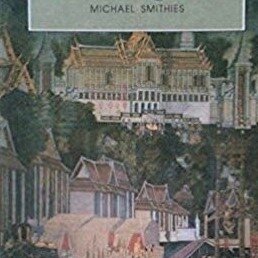
Michael Smithies
Translator of major works on Angkor and Cambodia from French into English, author of numerous books on the Siamese civilization.
Representative of the British Council in South East Asia for many years.
